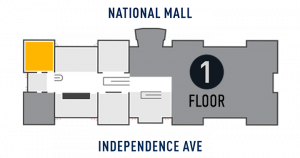In the United States, the Requa Gibson Company of New York City, led by Hugh C. Gibson, became the first American propeller manufacturer in 1909. The company began by crafting copies of Chauviére designs, but it then pioneered distinctively American designs by E.W. Bonson. The success of this pioneer propeller manufacturer was short-lived, as the company went bankrupt in June 1911.
This Requa Gibson propeller was used by Professor David L. Gallup in experiments at Worcester Polytechnique Institute from 1911 to 1913. The Gallup whirling arm experiments were one of the first comprehensive attempts to test the efficiency of propellers in the world. In 1912 the same testing apparatus was used by MIT student Frank W. Caldwell, who went on to become a leader in the development of propeller technology in both government and industry.
Display Status
This object is on display in Early Flight at the National Air and Space Museum in Washington, DC.

Object Details
Date
1911
Country of Origin
United States of America
Type
PROPULSION-Propellers & Impellers
Designer
E. W. Bonson
Manufacturer
Requa Gibson Company
Physical Description
Type: Two-Blade, Fixed-Pitch, Wood
Diameter: 189.2 cm (74.5 in.)
Blade Width: 26 cm (10.25 in.)
Engine Application: Unknown
Dimensions
Other (Blade): 10 1/4in. (26cm)
Rotor/Propeller: 189.2 x 13.3 x 1.3 x 3cm (74 1/2 x 5 1/4 x 1/2 x 1 3/16 in.)
Materials
Wood (Ash)
Varnish
Non-Magnetic White Metal
Inventory Number
A19300069000
Credit Line
Gift of Alden Hydraulic Laboratory, Worcester Polytechnic Institute
Data Source
National Air and Space Museum
Restrictions & Rights
Usage conditions apply
For more information, visit the Smithsonians Terms of Use.